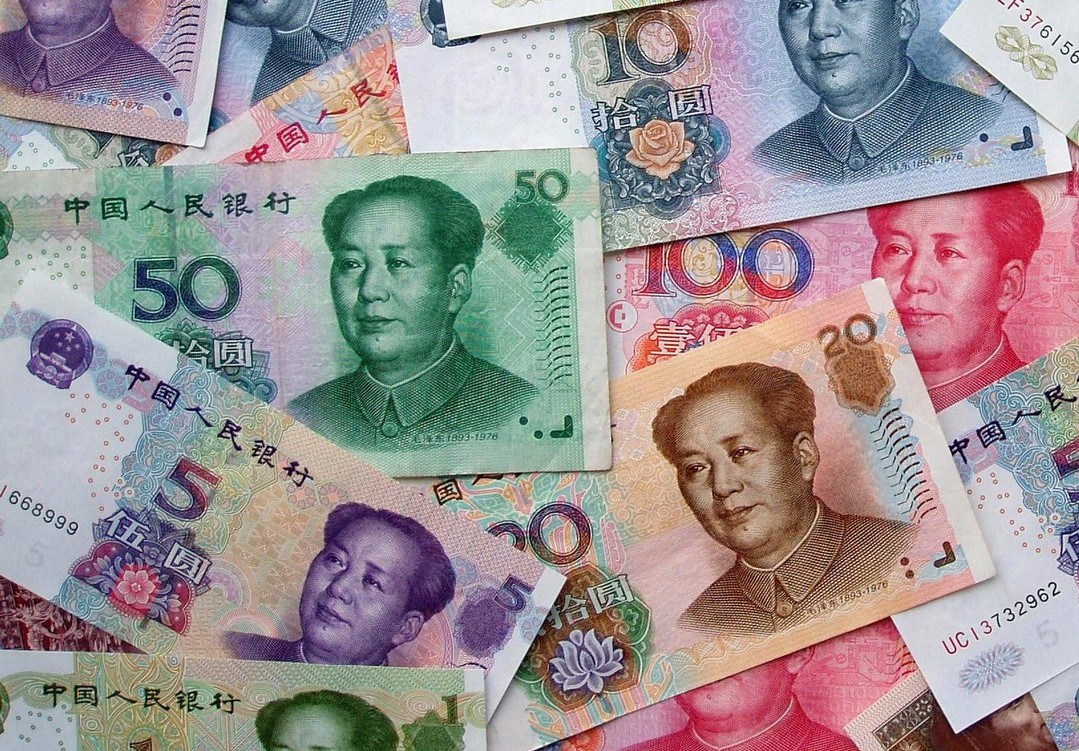The Chinese Elderly Care Industry

The Chinese Elderly Care Industry
Following its deep commitment to filial piety, Chinese society has long exalted multi-generation households. The current elderly and healthcare system reflect this cultural practice, relying on elderly individual’s family members to provide care and financial support. However, as the country’s economic, migratory, and working patterns change against the backdrop of an aging population, the new demand for quality elderly care has set off the rapid privatization of China’s elderly care industry. In 2018, 16.7% of China’s population was over the age of 60, around 230 million people. This meant that there were 2.8 working-aged persons for every 1 retired person. In 2050, the ratio is expected to drastically drop to 1.33 working persons for every 1 retired person. Furthermore, currently 150 million Chinese seniors suffer from chronic disease, and over 40 million are facing failing mental and physical health conditions. The current care system is unable to sustain these drastic demographic and economic shifts. To address this issue, the government is looking to increase private capital and investments in the industry, hoping to provide seniors with better quality, and more accessible services and options.
China’s Graying Society
Currently, China’s population is the largest in the world. It is set to peak in 2030 before it is expected to decline. It is projected that by then, the elderly will account for 33% of the overall population. This is partially due to the one-child policy, which led to a sharp decrease in younger generations. Instated from 1979 to 2016, this practice caused China’s birth rate to decline to 1.4 children per woman, compared to the replacement rate of 2.1 children per woman. By 2065, the overall population is expected to return to numbers seen in the mid 20th century.
Economic Challenges
China’s graying society poses two pressing economic issues. The first is that the drastic drop in people means a drastic drop in domestic consumption, a driving force in China’s economic growth and power. The second problem is the massive imbalance between China’s retired elderly and its working aged people. This demographic disparity is posed to put a significant, and critical, strain on the pension system and infrastructure, which will only be further exacerbated by China’s economic decline. This has been dubbed the “4-2-1 problem,” where one child is expected to support two parents and four grandparents in increasingly challenging economic situations.
China’s elderly and younger generations are also increasingly differentiated by where they live. This makes caring for elderly family members more difficult. China’s population is rapidly relocating from the rural countryside to its major cities, with most of those moving to be the younger, working class in search for economic opportunities. In 1980, right after China’s major economic reforms, only 19% of China’s population lived in urban cities. In 2000, the percentage has nearly doubled to 36%, and this year, another 20 years later, the number has nearly doubled once more, with over 61% of the population living in cities. The term “liushou laoren,” or left behind elderly, has been coined to refer to the millions of seniors left on their own in the countryside as their children relocate to China’s metropolitan cities (this phrase mirrors “liushou ertong,” or left behind children, who are kids whose parents left for the city). As the traditional practice of children caring for older generations becomes harder and harder to sustain, the government is looking to improve the state and private services offered to the elderly.
Privatization and Globalization of Healthcare
The Chinese government regards health and medical care critical considerations in improving the elderly’s health, happiness, and quality of life. This is reflected by how China’s senior care market is increasingly being combined with medical services. If senior living facilities do not have a hospital on their own grounds, they are likely to either have their own clinic or be built near a hospital. To improve the eldercare system, the government must first improve the healthcare system.
The majority of China’s healthcare system is state-operated and nonprofit. People flock to prestigious hospitals in large cities, greatly exceeding their capacities, while other institutions were left inefficiently empty. Relatively low salaries for physicians and complex, non-centralized bureaucratic systems have led to low levels of transparency and bribery scandals. Besides comprehensive public healthcare reform, the strong demand for high-quality, accessible healthcare has led to the privatization of urban hospitals. Between 2006 and 2011 the number of private hospitals in the country doubled. However, the majority of such private hospitals are smaller and specialty clinics, and in 2016, these private institutions accounted for less than 10% of China’s overall healthcare revenue.
The 13th Five-Year Plan addressed one of the biggest challenges for non-state entities looking to enter China’s elderly service market: complex administrative processes and bureaucracies that usually favor public, domestic institutions. For example, prior to this plan, 30% of all private hospitals must be Chinese-owned. This limit has been under increasing scrutiny, and the government has set up certain cities and trade zones allowing for 100% foreign-owned hospitals. This will likely be a point of further development in the upcoming 14th Five-Year Plan. The government is hoping to continue this momentum and further streamline the process for foreign investment.
Further Legislation Promoting Foreign Investment
Since then, they have further taken multiple legislative steps in order to promote and increase foreign capital in the eldercare and health industry. The “Finance and Tax Circular 77/2014” and Article 9 of the “2014 Eldercare Foreign Investment Circular” established that eldercare institutions with foreign investments are entitled to the same preferential and tax policies as domestic ones. Policies like the 2015 “Implementing Opinions on Private Participation in Eldercare” outlined benefits like tax exemptions, administration levy reductions, and the increased allocation of state lottery welfare funds. The government has also promoted sector jobs and educational opportunities in an effort to increase the number and quality of workers in the industry. In 2016, the Chinese government announced that they are looking to completely open the elderly care market to foreign investment by the end of 2020.
These legislative reforms have enacted many positive changes. It has set an attractive foundation for foreign companies to enter the market. For example, Columbia Pacific Management, an American-based company, recently announced a joint-venture with Temasek, a Singaporean investment fund, called Columbia China to operate senior living facilities and hospitals. They already run a hospital, two clinics, and three senior living facilities in China with multiple projects in development. The 14th Five Year Plan (2021-2025) is expected to continue to promote the equal treatment of non-profit private and public institutions, further creating excellent points of market entry.
Over The Counter and Remote Health Care
A rapidly growing market looking to address the care gap created by the rural-to-urban migration is the over-the-counter and remote care industries. While generations may have more physical distance between them, the cultural values of care and responsibility are still deeply entrenched in the Chinese people. Children are finding and utilizing new methods to remotely care for their elderly parents besides paying for private health and elderly care, including buying supplements and using new technology.
Nutritional Supplements and Pharmaceuticals
A growing market focusing on at-home-care for the elderly is nutritional supplements. China’s nutritional supplements market is projected to hit $40 billion by 2023, and companies, fortifying their products with vitamins and minerals like calcium, zinc, and vitamin D, have increasingly aimed their marketing towards seniors. The government and multinational companies are both responding to this sudden increase in products. In 2018, the National Health Commission and the State Administration for Market Regulation have, for the first time ever, introduced guidelines and regulations for labelling foods targeting the elderly. This move further emphasized and concreted seniors as a rising market.
Moreover, China and its domestic companies’ tumultuous past with food safety has led to an increased interest in and preference for western products. These products are known for their stringent regulations and rigorous testing or monitoring processes. This reason, paired with the general industry growth, poses an excellent entry point for foreign companies. This interest in foreign pharmaceuticals has spurred western companies’ commitment to this market. Many companies are increasing their presence in China’s pharmaceutical market, the second most valuable in the world. For instance, earlier this year, GNC partnered with Chinese pharmacy chain Renmingtongtai to release four new products intended for the elderly. Western pharma giants like Amgen (American) and AstraZeneca (British-Swedish) are also increasing their investments as Chinese policies shift in its continual bid to privatize healthcare.
Technological Innovations and Remote Health Monitoring
China is becoming increasingly tech literate and dependent. With the extreme popularity and widespread preference for applications like WeChat, which centralizes access to features comparable to Instagram, PayPal, Uber, and Amazon all in one place, China is consuming more and more high technology. The elderly are a part of the movement as well, producing popular content like viral plaza dancing videos or contributing to the popularity of apps like virtual mahjong. This kind of technology makes recreation and routine errands more convenient and accessible. It also increases the overall connectivity and communication levels between different, separated households. Just as how mainstream technological innovations are looking to increase their elderly users, healthtech is no different. By making the remote monitoring of health data more convenient, accessible, and easy to communicate, it is looking to streamline eldercare no matter the physical distance between families.
Given how intertwined the eldercare and healthcare industries are, any significant progress seen in the general healthtech market parallels and drives technological change in the eldercare market. Telemedicine in general is rapidly growing, innovating, and developing. For example, big data and artificial intelligence have already established themselves as mainstays in China’s health industries. Companies ranging from Chinese industry leaders like Alibaba Health and Tencent to foreign start-ups like VoxelCloud are investing in diagnostic AI and cloud-computing solutions.
Similar big data analytics is also playing an increasingly important role in wearable technology marketed towards China’s elderly. Xiaomi, one of the largest cell phone manufacturers in China, already caters certain products and features towards seniors, like their cell phone’s simplified Lite Mode. Their extremely popular fitness bracelet, able to collect, analyze, and report data in real time, is a popular option for the elderly. Other companies are also cashing in on remote healthtech. HiNounou, for example, is a Shanghai startup creating kits for seniors to test genetic diseases, and monitor and report health data. AI-blockchain is then utilized to extrapolate and detail preventative and predictive care measures from said data. This kind of technology is popular and highly favored because not only is it accessible and informative, but as nuclear households increase and multigenerational ones decrease, it is an instant and reliable source of communication, connection, and awareness between seniors and their family.
Do You Want To Do Business in China’s Elderly Care Industry?
As China continually seeks new ways to bridge the gap in eldercare resources and further opens its doors to foreign investment, foreign businesses are in a better position than ever to enter the market. The care of China’s elderly will remain a core focus of healthcare development in China over the next decade. In order to enter the market, your company should evaluate what you have to offer compared to local solutions and construct a proper market entry strategy accordingly.
If you would like to talk with our team of experts about potentially entering the China market, feel free to send us a message today.
Related posts






